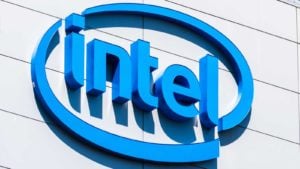Semiconductor stocks have been in focus ever since President Joe Biden signed the bipartisan CHIPS and Science Act into law on Aug. 9. The PHLX Semiconductor index is up around 5% since then. Of course, not all chip companies will benefit equally.
Before we get to which semiconductor stocks are likely to benefit most, it’s important to understand what the legislation aims to do. According to the White House:
The CHIPS and Science Act will boost American semiconductor research, development, and production, ensuring U.S. leadership in the technology that forms the foundation of everything from automobiles to household appliances to defense systems. America invented the semiconductor, but today produces about 10 percent of the world’s supply—and none of the most advanced chips…
The CHIPS and Science Act will unlock hundreds of billions more in private sector semiconductor investment across the country, including production essential to national defense and critical sectors.
In terms of actual numbers, the CHIPS and Science Act allocates $52.7 billion for semiconductor research, development, manufacturing and workforce development. That’s a lot of dough. So, let’s take a look at the semiconductor stocks likely to get a longer-term boost from the legislation.
| INTC | Intel | $36.34 |
| MU | Micron Technology | $64.70 |
| TXN | Texas Instruments | $185.40 |
Intel (INTC)

Intel (NASDAQ:INTC) is not my favorite semiconductor stock, especially when you compare it to high-growth names like Advanced Micro Devices (NASDAQ:AMD), which I like much better. But, in this case, we’re looking at semiconductor stocks that will benefit the most from the new CHIPS Act — and Intel is certainly on that list.
A Bank of America analyst estimates that Intel could receive $10 billion to $15 billion from the CHIPS Act over the next five years. While the analyst noted that it won’t be a “silver bullet” for Intel, the large amount of funds will certainly be a positive for the company. With any luck, it will help Intel develop more advanced chips, which it’s currently lacking.
Analysts expect an 11.3% decline in revenue this year and a whopping 37.5% decline in earnings. However, in 2023, estimates call for revenue and earnings growth of roughly 3% and 1%, respectively. That’s hardly impressive, but keep in mind that Intel is a mature company. Its forward price-to-earnings ratio of 14.5 is well below that of AMD.
INTC stock is down 32% in the past 12 months. If shares have hit bottom, they could prove to be a steal for investors at these levels. Plus, there is the semiconductor stock’s 4%-plus dividend yield to consider.
Micron Technology (MU)

Following the passage of the CHIPS Act, Micron Technology (NASDAQ:MU) said it will invest $40 billion in memory chip manufacturing through 2030, creating up to 40,000 jobs in the United States. The resultant additional capacity will take Micron’s U.S. market share from 2% to 10%, the company said.
Micron’s plans could include building a mega fabrication plant in the United States. Rob Beard, the company’s senior vice president and general counsel, said Micron has been eyeing a mega fab “for a long time.”
MU stock topped out in January and is down around 34% from its high. The company recently reported disappointing quarterly results and slashed its outlook. However, since hitting a 52-week low in early July, MU is up 26%.
Citi analysts say the stock has bottomed. If that’s the case, investors may still have a good entry opportunity with shares trading at just 6.3 times forward earnings.
Texas Instruments (TXN)

Last but certainly not least is Texas Instruments (NASDAQ:TXN). The stock has held up much better than many of its peers this year and the broader tech sector. MU is down just 2% year to date and only 9% below its all-time high.
The company already planned to make some sizable investments in its U.S. manufacturing capacity regardless of the CHIPS Act. CEO Rich Templeton called the recent legislation “gravy on top.” Any subsidies the company receives will mean less of a financial burden for Texas Instruments to shoulder.
Shares trade at roughly 20 times forward earnings with revenue forecast to grow about 10% this year. A 2.5% dividend yield offers a little more gravy for investors.
On the date of publication, Bret Kenwell did not have (either directly or indirectly) any positions in the securities mentioned in this article. The opinions expressed in this article are those of the writer, subject to the InvestorPlace.com Publishing Guidelines.